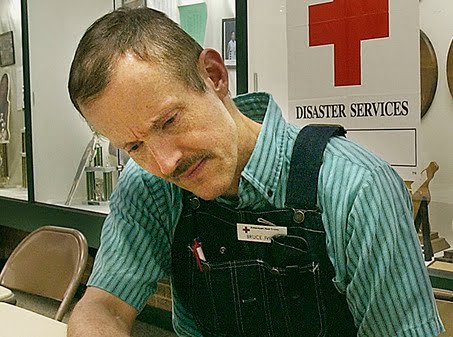Psychiatrists Misinterpret Bruce Ivins
On March 23, 2011 a panel of psychiatrists and others who consult for government security agencies issued a report1 on the behavior of alleged anthrax mailer US Army scientist Bruce Ivins. The panel, which was selected and chaired by an FBI consultant in the investigation,2 purports to offer an independent view.
We may reasonably consider as delusional the claim of the panelists that they are truly independent. Their closeness to FBI represents a major source of potential bias.
Thus it should not surprise us that the psychiatrists misinterpret the psychology of Bruce Ivins.
The evidence in their report and other evidence presented by the FBI and the media make clear that, in addition to his many benign social interactions and professional contributions, Bruce Ivins was a longstanding, energetic emitter of ideations of violence. As a child he had witnessed his mother’s bloody attacks on his father (who may have provoked them by ridiculing and harassing her, if his treatment of young Bruce is any indication). It doesn’t require a Sigmund Freud to perceive that Ivins internalized his mother’s behavior by thinking, talking, and writing about violent acts while he imitated his physically passive father by refraining from acting out his ideations.
There is no evidence that Ivins ever caused physical harm to any other person. The disproportion was extreme: scores or hundreds of violent thoughts; zero acts. A powerful, revealing disproportion.
We can infer that Ivins had a deep-set inhibition from childhood against inflicting physical harm on other people. To have mailed letters with virulent anthrax would have violated that lifelong taboo. It would have been utterly out of character. Perhaps the psychiatrists were misled by superficial evidence like Ivins’s propensities for sending letters to the media or driving long distances to deliver items. But the deeper pattern of a taboo arising from his childhood experiences is not hard to detect, and the psychiatrists should have spotted it.
Not that Ivins was really passive. Like his father, he seems to have ridiculed and harassed his wife. This might explain why at least once he showed up at work with a black eye and said that he got it from his wife’s fist—in other words, he had married a woman who resembled his mother in the sense that she struck her husband when provoked. In the note his wife wrote to Ivins on the day he ingested a suicidal dose of acetaminophen, she complained “You tell me you love me but you have been rude and sarcastic and nasty many times when you talk to me.”
Ivins also notoriously harassed with pranks and unwanted attention various KKG sorority women and female co-workers. Yet he never did physical harm to any of them. When FBI pressure in 2008 pushed him into a state of desperation, anger, and desire for revenge, he made a point of telling his intention to kill colleagues and others who had betrayed him to his whole therapy group, thus making it very likely that someone would report it to the police, and they would stop him.
In effect, the more evidence of violent ideations the psychiatrists cite (and they hint that there is more lurid confidential material), the greater the disproportion between ideation and act. So they are actually disproving their case even as they think they are proving it.
Judging by his track record at age 55 in 2001, it would have been out of character for Ivins to mail the anthrax letters. He had never done physical harm to anyone, yet, just this one time, conveniently for FBI’s case, we are to believe he did do such harm. Then, for the rest of his life, he reverted to doing no physical harm to others.
Hard to believe.
Thus the psychiatrists not only appear to suffer from a delusion that they are truly independent of FBI; they also get the crucial psychology of the alleged anthrax mailer completely wrong.
*****
Kenneth J. Dillon is an historian who writes on science, medicine, and history. See the biosketch at About Us.

